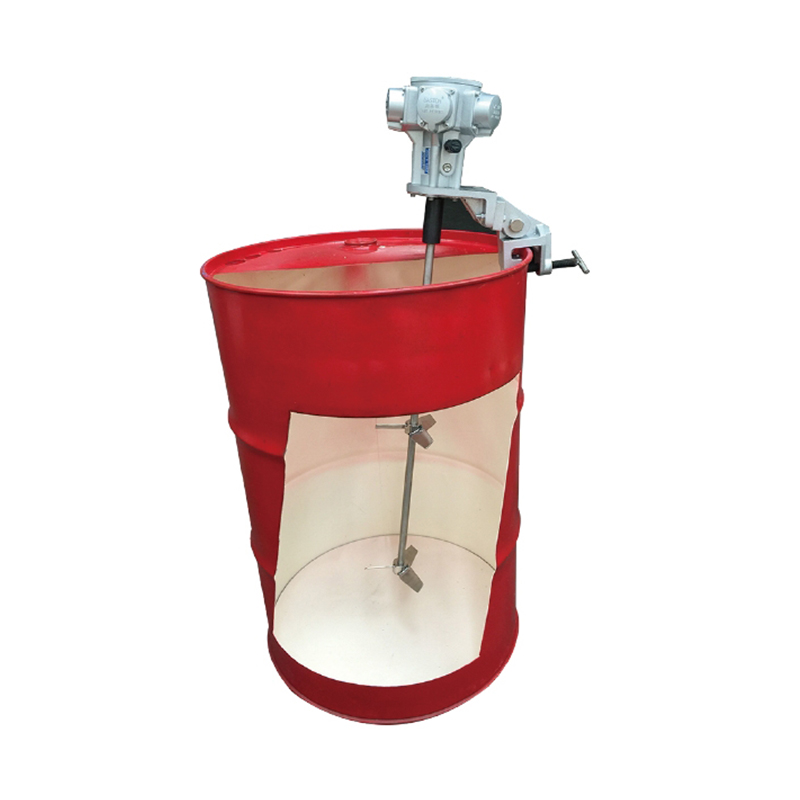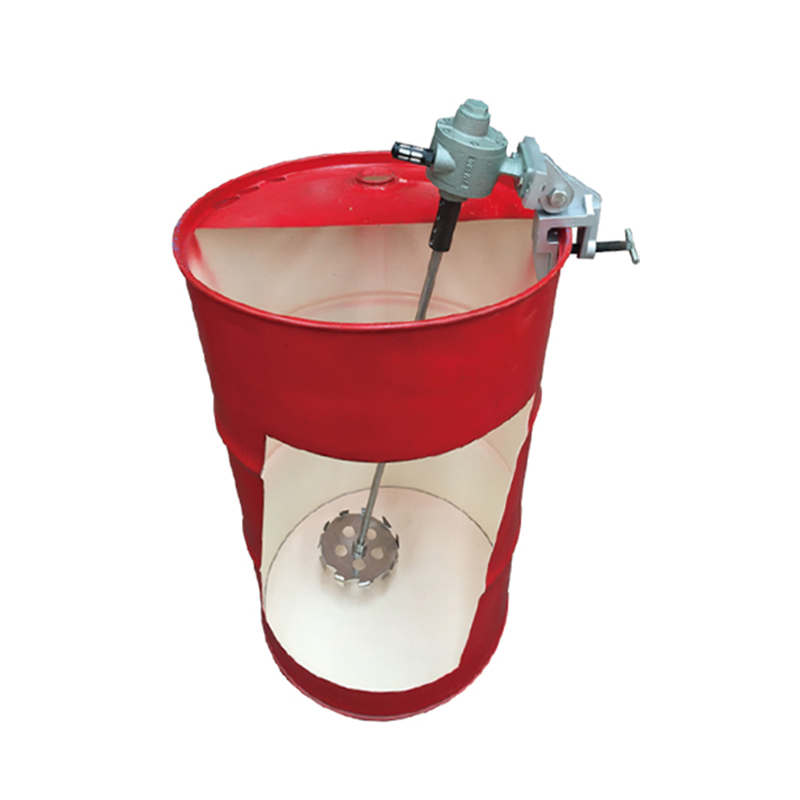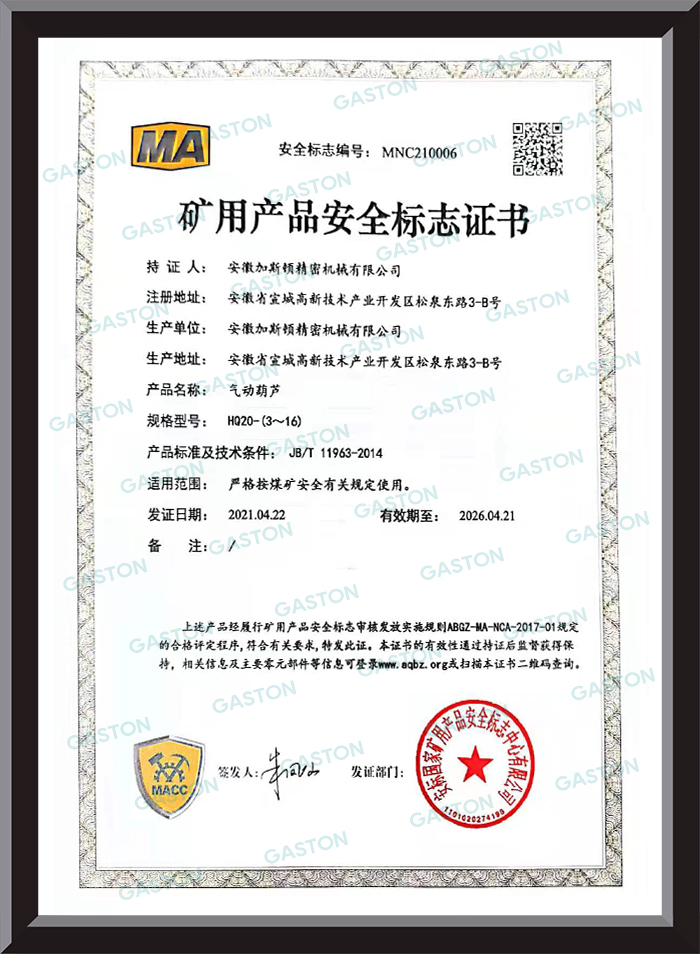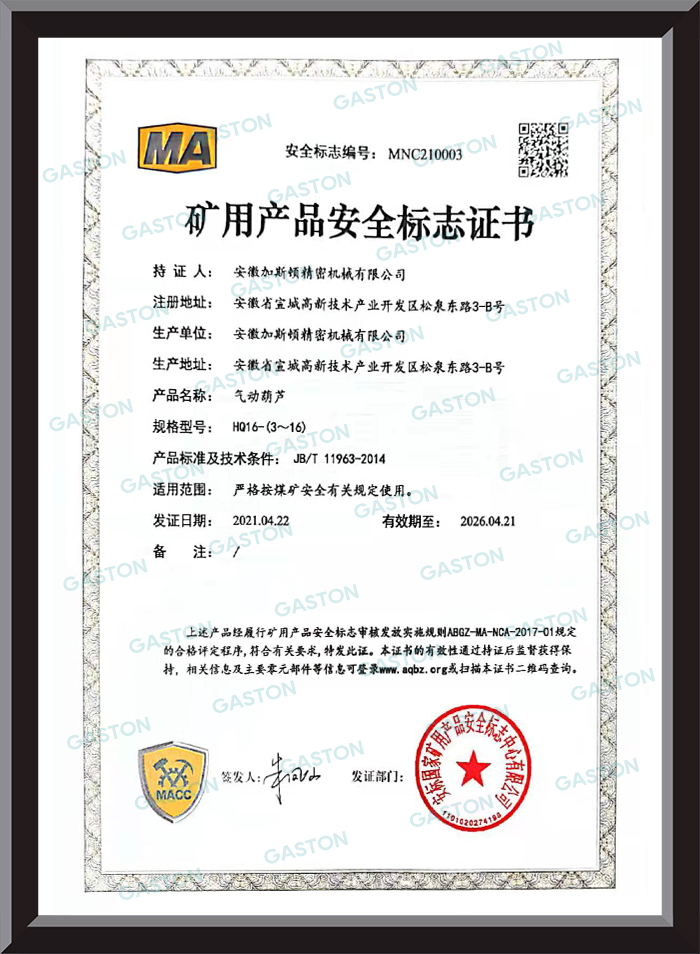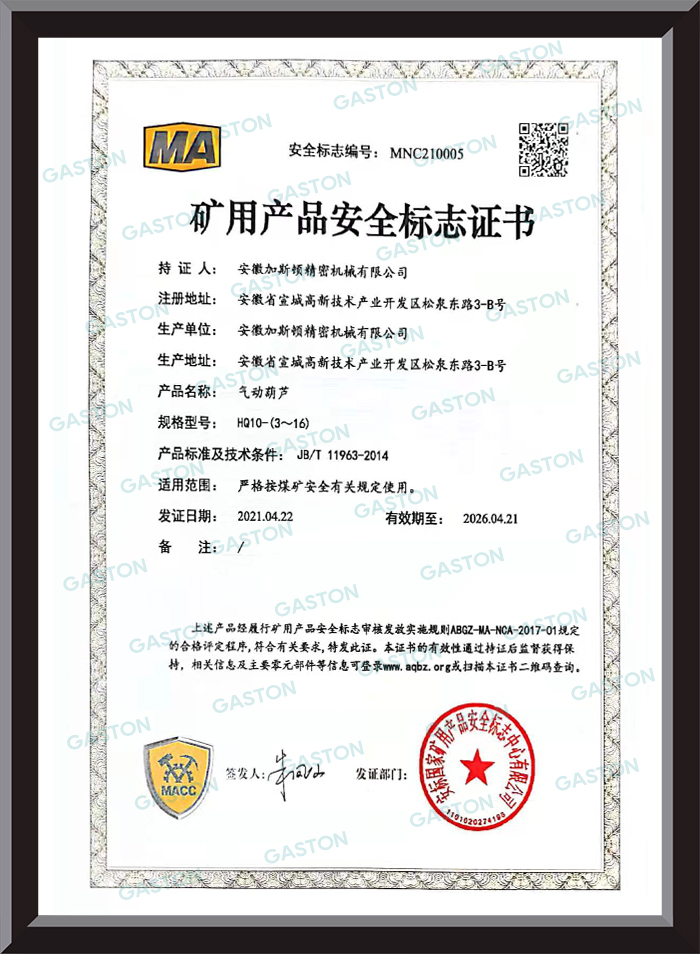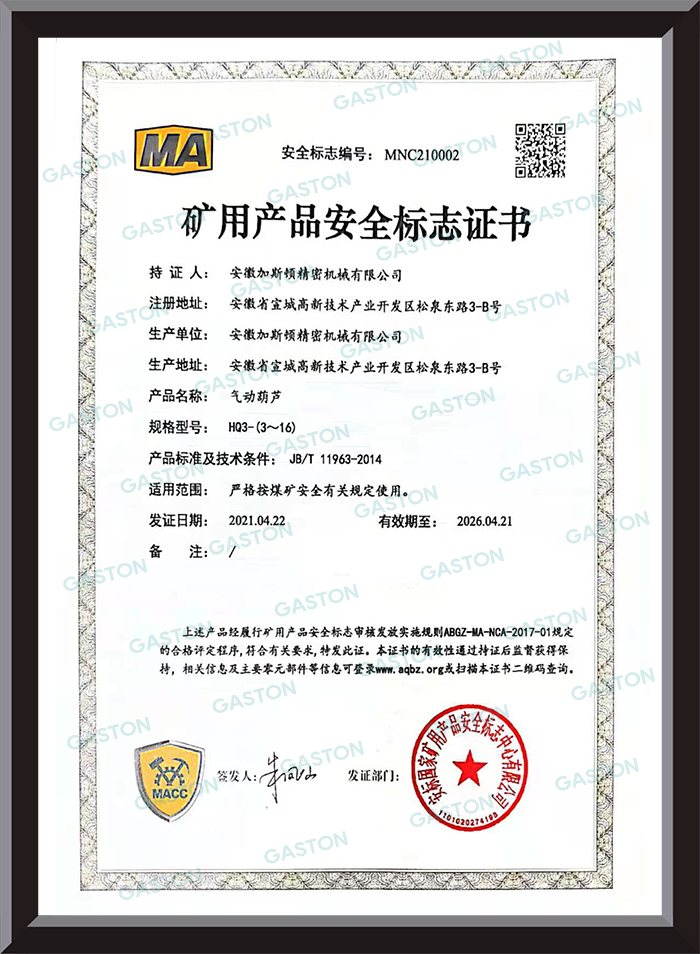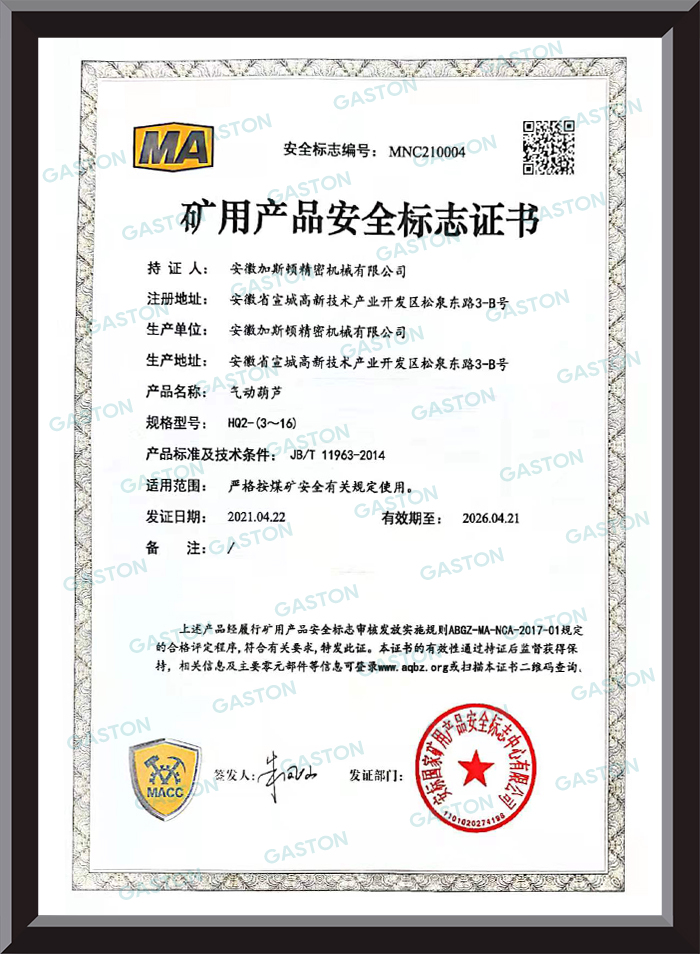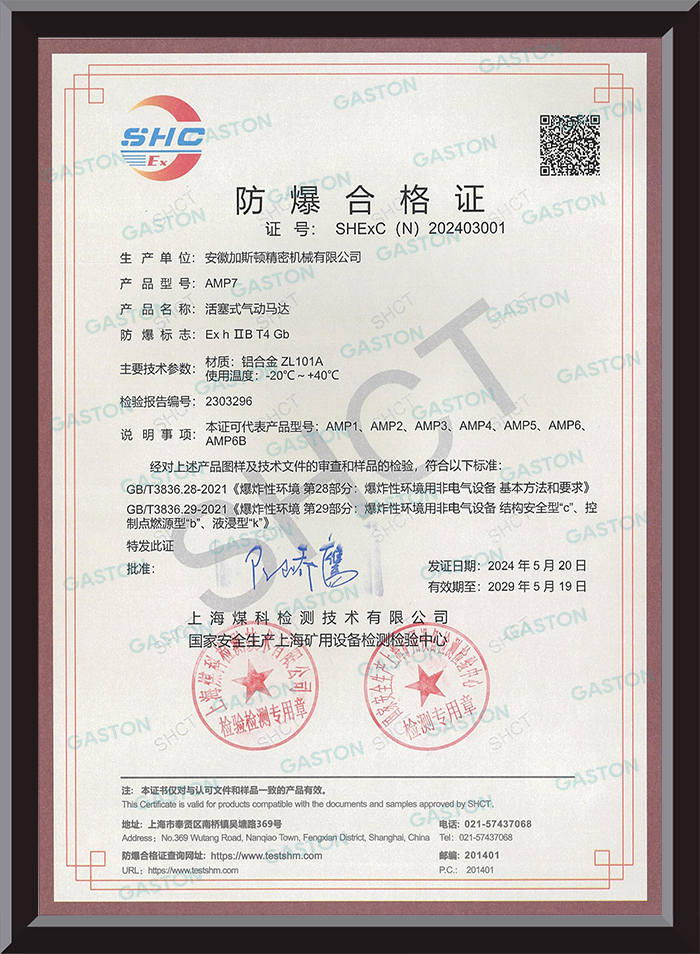Submit feedback
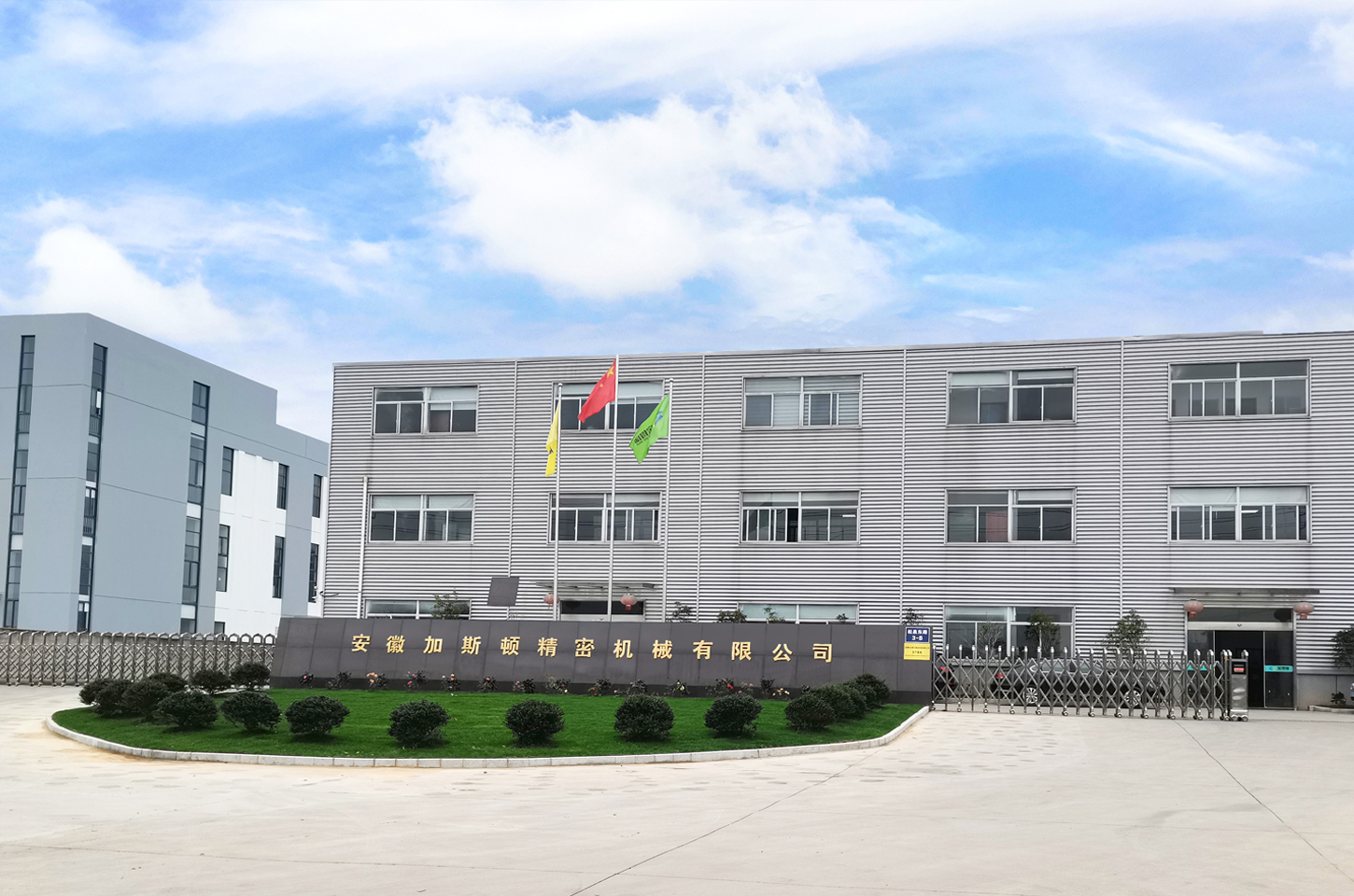
About Us
The company has been committed to product innovation for many years, focusing on the updating and upgrading of pneumatic motors. With fine concepts and continuous investment, it has created a creative design team and has designed multiple innovative pneumatic products. Currently, it has independent intellectual property rights and has obtained more than 30 product patents.
The company's main products include pneumatic motors and a series of products such as pneumatic hoists, pneumatic winches, pneumatic mixers, pneumatic emulsifiers, pneumatic explosion-proof pumps, pneumatic mixers, pneumatic fans, and industrial automation equipment pneumatic control system engineering developed based on specific production needs.
The company strictly follows the ISO9001 quality management system for product design, production, assembly, and testing. With the efforts of all employees, the company has passed the ISO9001 international quality system certification. Through strict procedures and high standards of auditing, the company has successfully passed the recognition of a "national high-tech enterprise". Gaston Company is gradually moving towards internationalization with its own strength and a global perspective.
Users with different needs will always be the coordinates we strive for and the driving force for constantly surpassing ourselves and striving for innovation! Gaston Company looks forward to sincere cooperation with friends from all walks of life at home and abroad to create brilliance together!
Honor Certificate
Latest News
-
Industry News 2025-09-22
With the advancement of industrial automation technology, pneumatic pumps, as an efficient and relia...
View More -
Industry News 2025-09-15
In modern industry, pneumatic industrial fans have become indispensable equipment in many sectors du...
View More -
Industry News 2025-09-08
In modern industrial production systems, the performance of power units directly determines the effi...
View More -
Industry News 2025-09-01
In modern industry, the choice of power transmission equipment directly impacts production efficienc...
View More -
Industry News 2025-08-22
In the vast arena of modern industrial production, lifting equipment is an indispensable "behind-the...
View More
Contact Us Now
Clamp-On Pneumatic Mixer Industry knowledge
How does the material selection and cleaning and maintenance process of Clamp-On Pneumatic Mixer ensure that the product is free of contamination and easy to clean in the food processing industry with extremely high hygiene requirements?
In the food processing industry with extremely high hygiene requirements, Clamp-On Pneumatic Mixer (clamp-on pneumatic mixer) has taken a number of measures in material selection and cleaning and maintenance processes to ensure that the product is free of contamination and easy to clean. The following are specific practices:
Material selection
Food-grade stainless steel: The main contact parts of Clamp-On Pneumatic Mixer, such as mixing blades, mixing shafts and clamping devices, are often made of food-grade stainless steel such as 304 or 316L. These materials have good corrosion resistance and antibacterial properties, meet the hygiene standards of the food processing industry, and can prevent bacterial growth and chemical precipitation, thereby ensuring the safety and purity of food.
Non-toxic rubber or silicone seals: To ensure sealing and prevent food contamination during the mixing process, the seals of Clamp-On Pneumatic Mixer are often made of non-toxic rubber or silicone. These materials have good resistance to high temperatures, acids, alkalis and abrasion, and will not release harmful substances into food.
Easy-to-clean surface treatment: The surface of the mixer may be specially treated, such as polishing or sandblasting, to reduce surface roughness and facilitate cleaning and disinfection.
Cleaning and maintenance process
Easy disassembly: The design of the Clamp-On Pneumatic Mixer usually takes into account the need for easy disassembly and reassembly, so that all key components can be easily accessed during cleaning and maintenance.
Cleaning steps:
Preliminary cleaning: Use clean water or a low-concentration food-grade detergent to initially rinse the exterior and visible parts of the mixer to remove surface dirt.
Deep cleaning: Disassemble the mixer to the smallest cleanable parts, and use a special food-grade detergent to soak or brush key parts such as the mixing blades, mixing shafts, and clamping devices. Be careful to use appropriate cleaning tools to avoid scratching the surface.
Rinse and disinfection: Rinse all parts thoroughly with clean water to ensure that there is no detergent residue. Subsequently, the parts can be disinfected with a disinfectant of appropriate concentration (such as sodium hypochlorite solution) to kill bacteria and viruses.
Drying and assembly: Air dry or wipe the cleaned and disinfected parts with a clean cloth, then reassemble the mixer in the correct order.
Regular inspection and maintenance: In addition to daily cleaning, the Clamp-On Pneumatic Mixer should be inspected and maintained regularly, including checking the wear of seals, looseness of fasteners, and replacement of lubricants. These measures help keep the mixer in good working condition and extend its service life.
Training and records: Train operators on cleaning and maintenance procedures to ensure that they understand and comply with relevant regulations. At the same time, establish a cleaning and maintenance record system to track the cleaning and maintenance of equipment and detect problems in a timely manner.
Through the implementation of the above measures, the Clamp-On Pneumatic Mixer can ensure that the product is contaminant-free and easy to clean in the food processing industry, meeting the industry's strict requirements for hygiene and safety.
What are the application advantages of Clamp-On Pneumatic Mixer in the field of chemical mixing?
The application advantages of Clamp-On Pneumatic Mixer in the field of chemical mixing are mainly reflected in the following aspects:
1. High safety performance
Explosion-proof design: Since pneumatic motors do not generate electric sparks, they are suitable for flammable and explosive chemical environments, and can effectively avoid the risk of explosion caused by electrical sparks.
No leakage risk: Pneumatic mixers are usually designed with a reliable sealing system to reduce the possibility of material leakage and meet the safety requirements of the chemical industry.
2. Strong adaptability
Adapt to a variety of materials: Pneumatic mixers can handle a variety of chemical materials, including corrosive and highly viscous liquids or slurries. By selecting appropriate materials and stirring paddle forms, they can meet the needs of different chemical processes.
Flexible installation: The clamping design allows the mixer to be quickly and easily installed on various containers or pipes without the need to modify the container, which improves the flexibility and adaptability of the equipment.
3. High mixing efficiency
Efficient mixing: The pneumatic agitator converts the expansion of compressed air into mechanical energy, drives the agitator to mix efficiently, and ensures that the materials reach a uniform st
ate in a short time.
Precise control: By adjusting the air pressure and speed of the pneumatic motor, the stirring intensity and stirring time of the agitator can be accurately controlled to meet the needs of different chemical reactions.
4. Low maintenance cost
Simple structure: The structure of the pneumatic agitator is relatively simple, and maintenance and maintenance are relatively easy, which reduces the maintenance cost of the equipment.
Strong durability: Pneumatic motors are usually made of wear-resistant and corrosion-resistant materials, with a long service life, reducing the frequency and cost of equipment replacement.
5. Environmental protection and energy saving
Low noise: The noise generated by the pneumatic agitator during operation is relatively low, which helps to improve the working environment of the chemical production workshop.
Low energy consumption: Compared with electric agitators, pneumatic agitators have lower energy consumption under the same stirring effect, which is conducive to energy conservation and emission reduction of chemical enterprises.
6. Easy to integrate automation
Automation control: Pneumatic agitators can be easily integrated with automatic control systems to realize automatic control of the mixing process and improve production efficiency and product quality.


 English
English русский
русский Français
Français Español
Español 中文简体
中文简体 عربى
عربى


